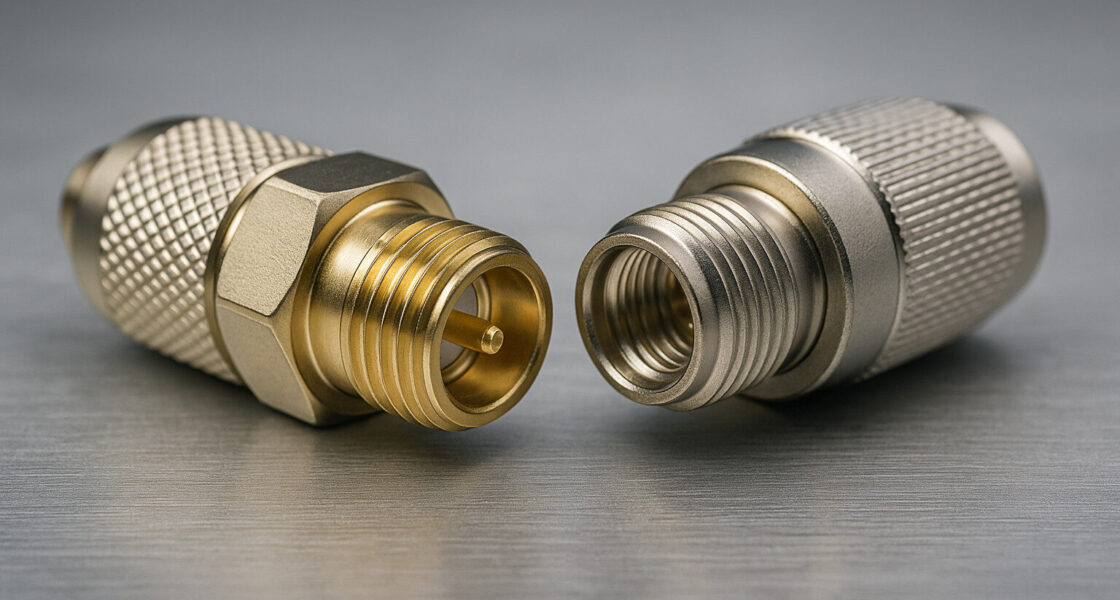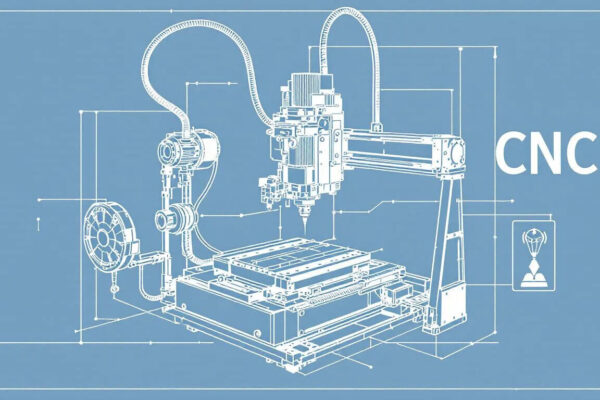An SMA connector is a compact and reliable screw-type connector for coaxial cables, widely used in RF applications for its stability and performance up to 18 GHz—with precision versions up to 26.5 GHz and specialized variants up to 34 GHz (vendor-dependent). This article explains what makes SMA connectors special, their variations, key benefits, and where they are commonly used.
Key Takeaways
- Stable RF performance: SMA connectors provide secure, low-loss connections. Standard parts operate to 18 GHz, precision versions to 26.5 GHz, and some specialized variants to 34 GHz (specifications may vary by supplier).
- Standard vs. RP-SMA matters: The distinction between standard and reverse-polarity (RP-SMA) is crucial for compatibility and signal integrity. Mismatched genders/pins can degrade performance or prevent mating.
- Durable in harsh conditions: Robust materials and design enable reliable operation in military, aerospace, and industrial environments.
Understanding SMA Connectors
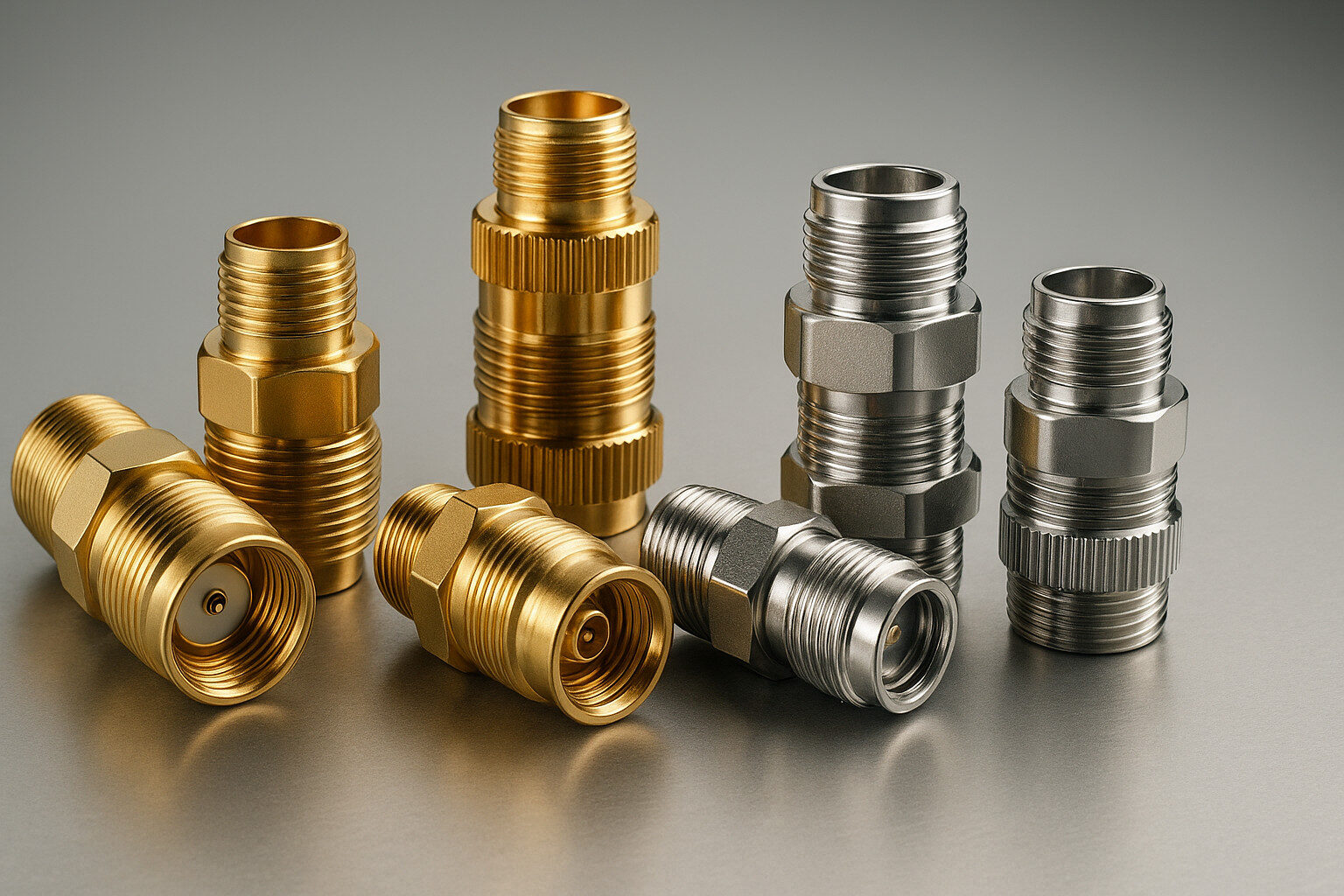
Developed in the 1960s, SMA (SubMiniature version A) connectors offer a compact, dependable interface for coaxial cables. Their threaded (screw) coupling provides a secure connection—especially useful in environments with vibration or movement.
Notable characteristics
- Characteristic impedance: 50 ohms
- Signal integrity: Consistent, low-loss performance at high frequencies
- Frequency capability: Standard to 18 GHz, precision to 26.5 GHz, specialized variants to 34 GHz
The reverse-polarity (RP-SMA) variant swaps the typical pin/sleeve arrangement compared to standard SMA. This helps prevent inadvertent mating with non-approved antennas and supports regulatory compliance in certain wireless applications.
Types of SMA Connectors
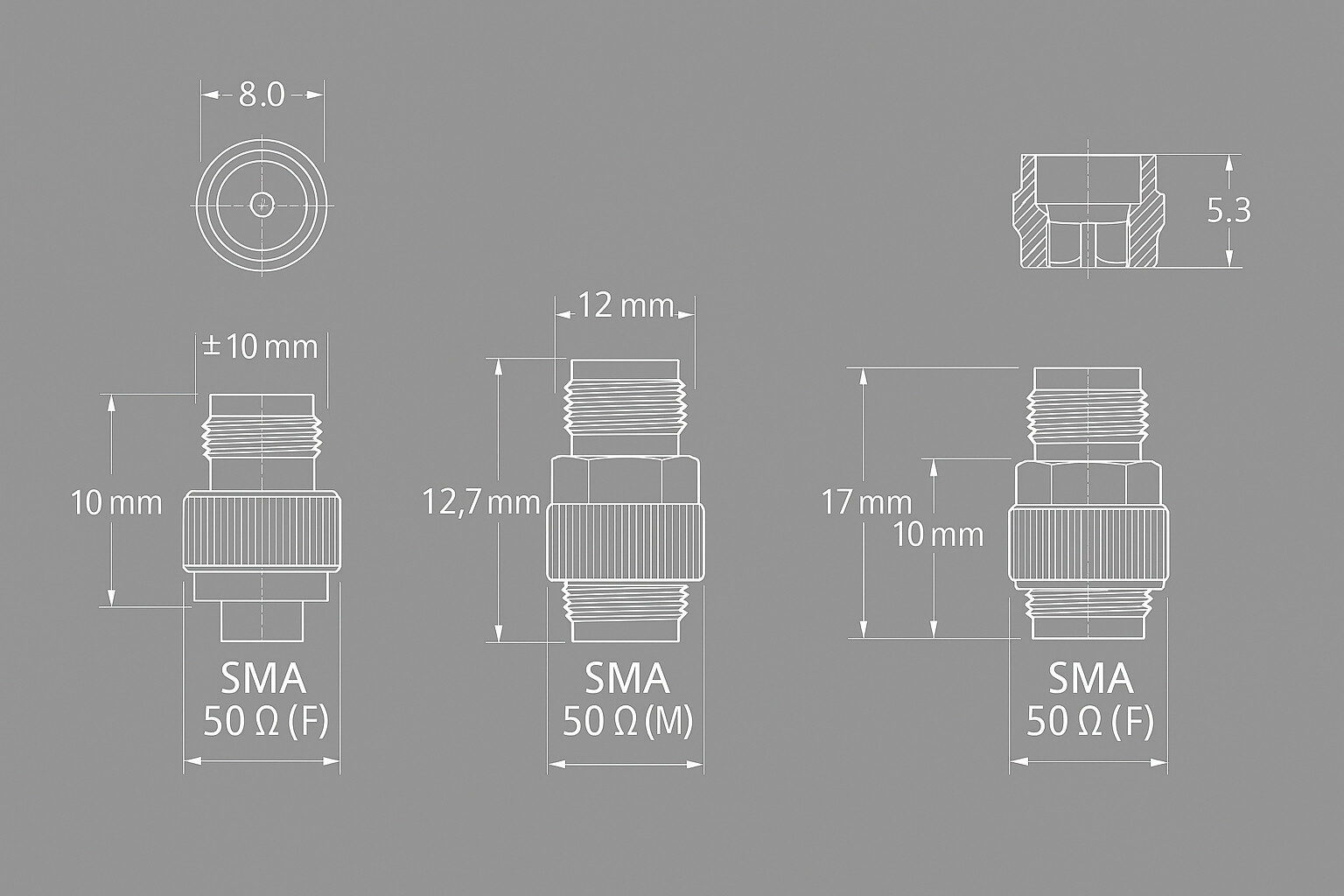
- SMA male (plug): inner pin
- SMA female (jack): central sleeve
- RP-SMA male: sleeve (no pin)
- RP-SMA female: inner pin
Selecting the wrong type can lead to poor performance or mechanical incompatibility. Knowing the differences between SMA and RP-SMA—and between male and female—ensures correct, reliable connections.
Benefits of Using SMA Connectors
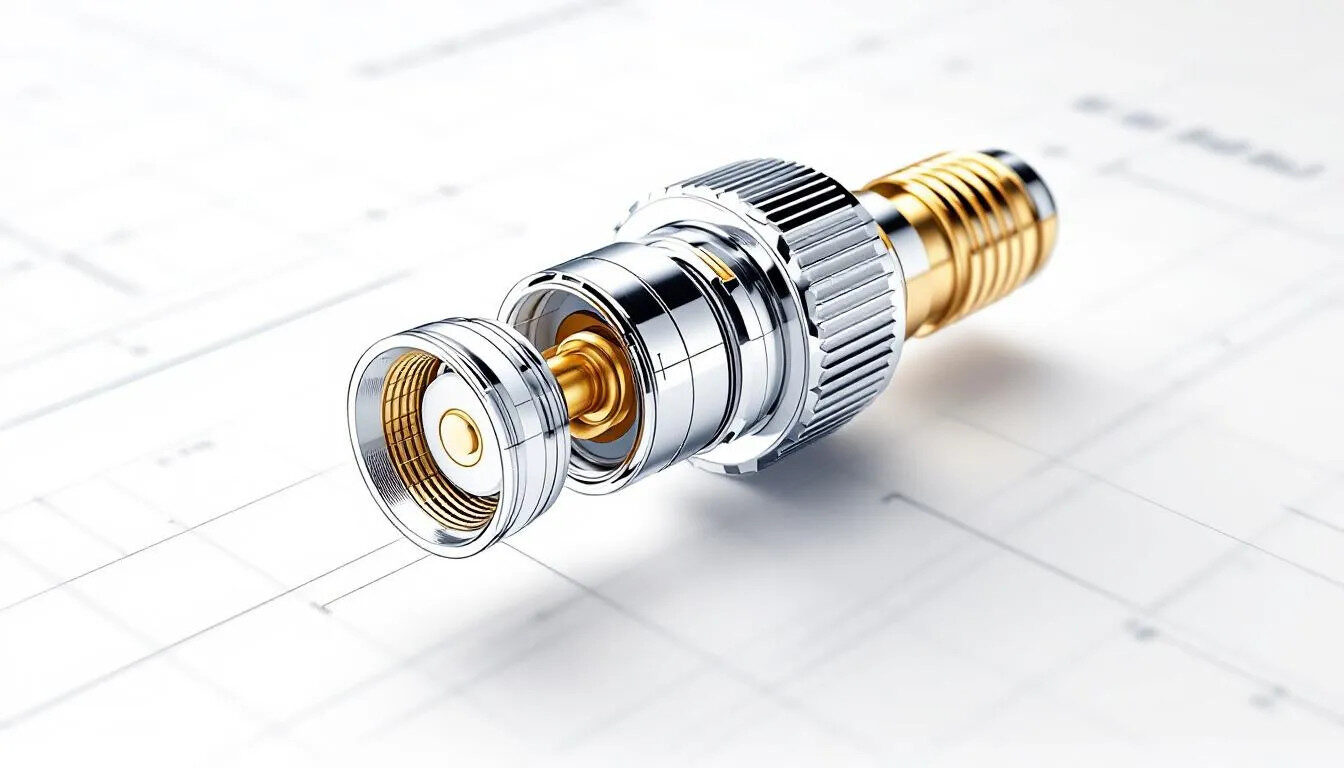
1) Screw Coupling
- Threaded coupling provides a secure, stable mate
- Minimizes accidental disconnects in high-vibration settings
- Ideal where a stable signal path is required (e.g., aerospace, defense)
2) High RF Performance
- Low insertion loss and consistent impedance
- 18 GHz for standard SMA; 26.5 GHz for precision; up to 34 GHz for specialized variants
- Suitable for microwave, radar, and satellite applications
3) Durability
- Common materials: stainless steel and brass
- Resistant to corrosion; typically > 500 mating cycles
- Wide operating temperatures: –65 °C to +165 °C
Common Applications
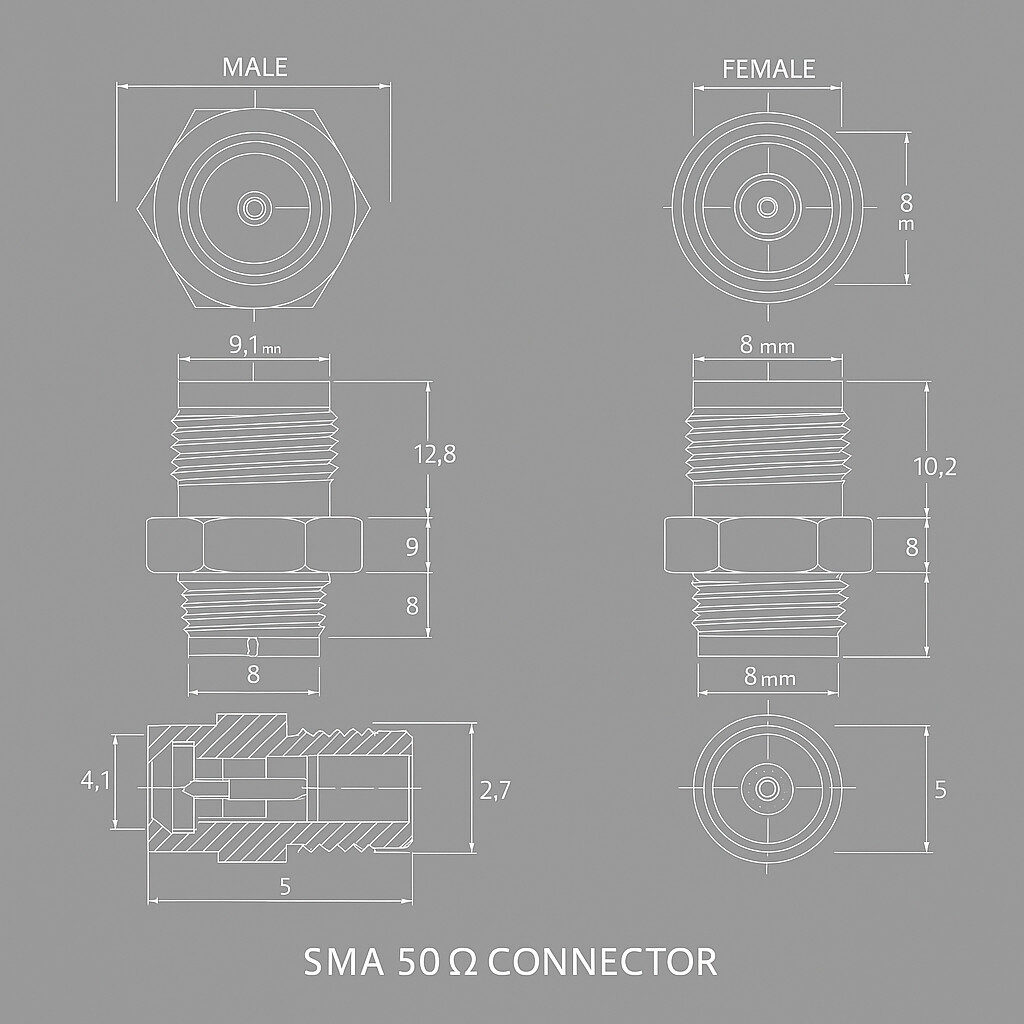
- Wireless communication: routers, modems, Wi-Fi devices
- Aerospace & defense: navigation and communication subsystems
- Test & measurement: oscilloscopes, signal generators, RF analyzers
- Compact/industrial systems: space-constrained designs in commercial and industrial equipment
SMA Connector Specifications
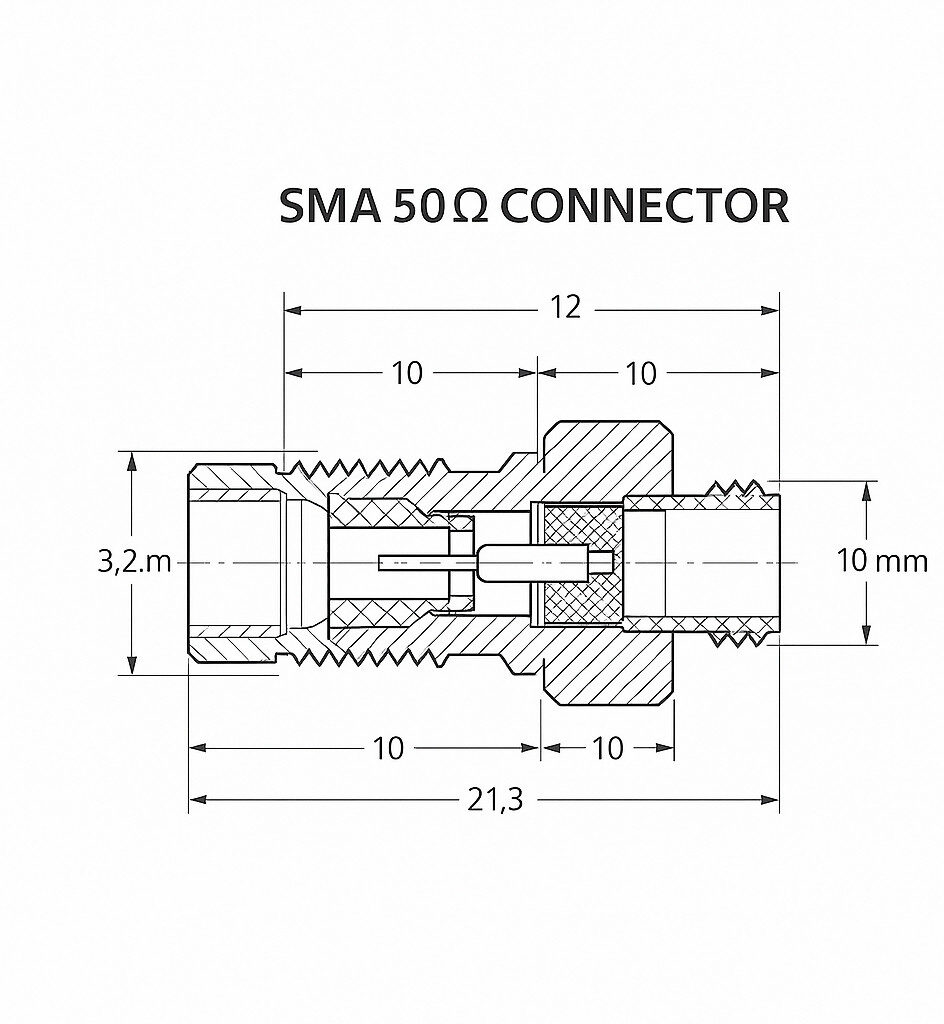
Key electrical properties at a glance:
- Characteristic impedance: 50 ohms
- Frequency range: DC to 26.5 GHz (standard typically to 18 GHz; precision to 26.5 GHz)
- Voltage rating: 335 V RMS (continuous)
- VSWR: typically ≤ 1.05 + 0.005·f(GHz) (configuration-dependent)
- Power handling: 75 W at 10 GHz (approx., depends on conditions)
- Insulation resistance: ≥ 5000 MΩ
Note: Exact values depend on manufacturer, materials, and build tolerances. Always verify with the specific datasheet.
Comparing SMA Connectors with Other RF Connectors
- BNC: bayonet lock; common in video/broadcast and lab setups; generally lower frequency than precision SMA use cases
- N-type / TNC: larger formats; robust, with good performance into the microwave range depending on series
- SMA: compact threaded design optimized for high-frequency precision
Each connector family has advantages depending on frequency, power, size, environment, and mounting needs.
Choosing the Right SMA Connector
Consider the following when selecting a connector:
- Frequency requirement (18 GHz standard, 26.5 GHz precision, up to 34 GHz specialized)
- Type (SMA vs. RP-SMA; male vs. female)
- Mounting (PCB, bulkhead/panel, right-angle for tight spaces)
Matching these factors to your design ensures compatibility, performance, and reliability.
Summary
SMA connectors are a proven, high-performance choice for RF systems. Their compact form, threaded coupling, and robust construction make them well-suited to demanding environments across communications, industry, aerospace, and defense. Understanding types, benefits, and specifications will help you choose the right part for your application.
Frequently Asked Questions
What are the primary types of SMA connectors?
Male (inner pin) and female (sleeve); RP-SMA variants invert the pin/sleeve arrangement.
What is the characteristic impedance of SMA connectors?
50 ohms, which supports proper impedance matching in RF systems.
How do RP-SMA connectors differ from standard SMA?
RP-SMA uses a reversed pin/sleeve configuration to prevent unintended mating with standard SMA.
What are the main benefits of SMA connectors?
Secure threaded coupling, high-frequency capability, and durability in harsh environments.
How do SMA connectors compare to BNC or N-type/TNC?
SMA excels in compact, high-frequency applications; BNC is common in video/lab contexts; N-type/TNC offer robust options depending on frequency and power needs.

